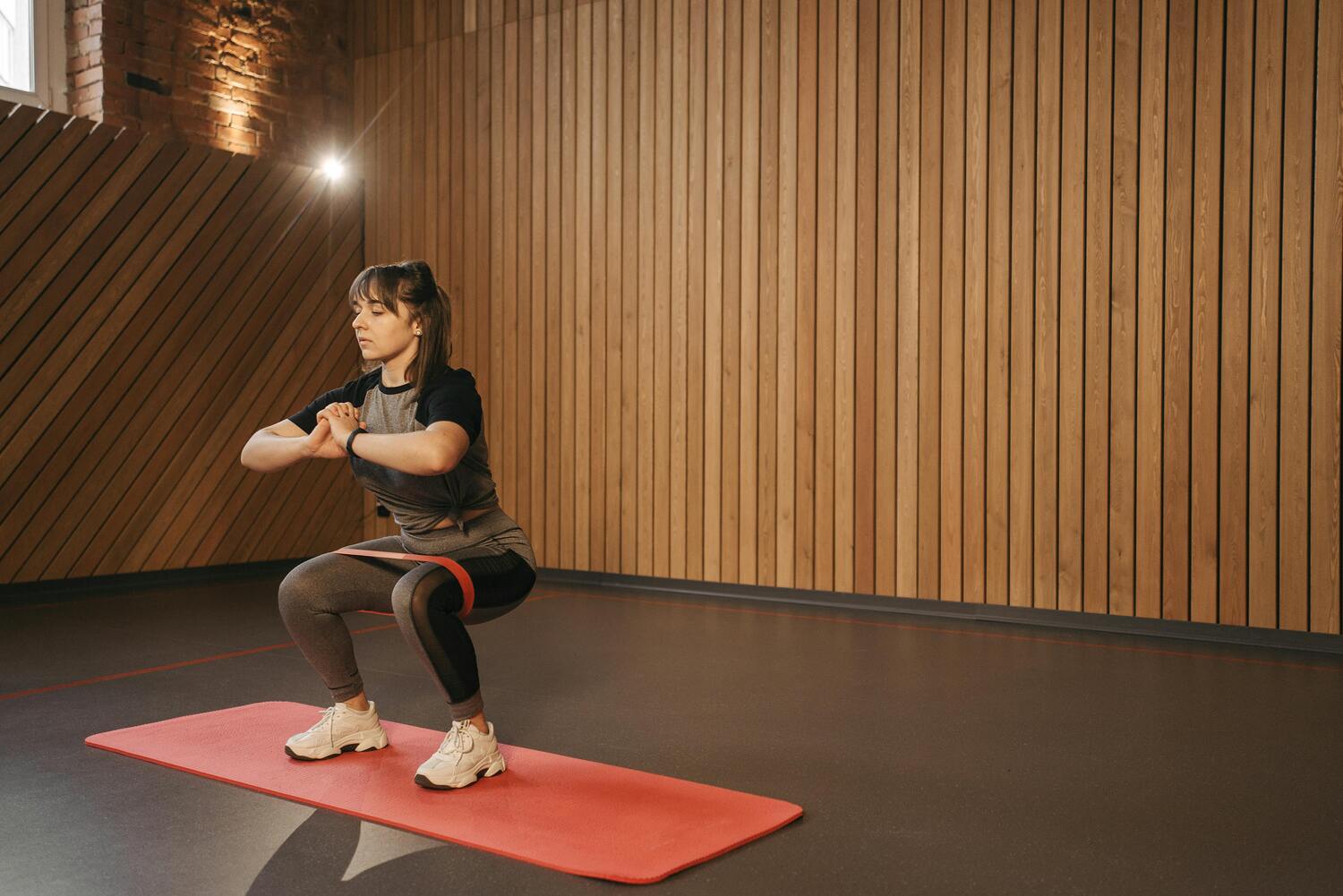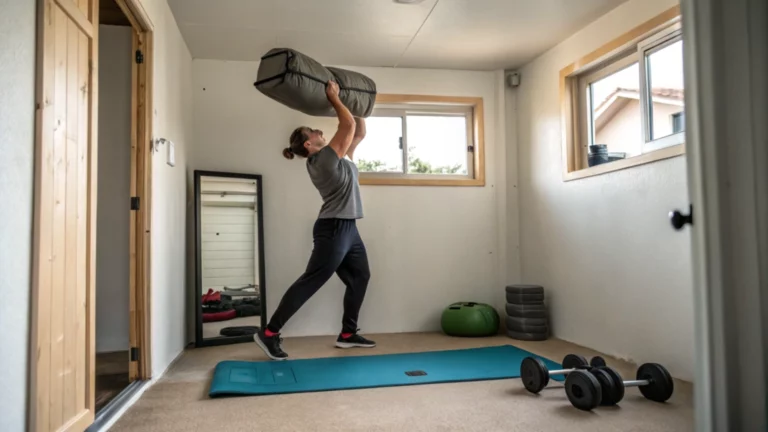Juggling a busy life with staying fit can be a challenge.
Gym memberships can be expensive, and lugging around bulky equipment isn’t always an option.
But what if there was a simple and effective way to get a full-body workout at home, without breaking the bank?

Enter resistance bands, the versatile fitness tool that’s become a favorite among fitness enthusiasts and home exercisers alike.
Key Takeaways:
- Resistance bands are a simple and effective tool for building strength, improving flexibility, and enhancing your workouts.
- They come in various resistances, lengths, and styles to suit all fitness levels and goals.
- Resistance bands are portable, affordable, and require minimal storage space, making them perfect for home workouts.
- This article explores the benefits of resistance bands, different types available, and provides tips to get you started with resistance band workouts.
The Rise of the Resistance Band

Resistance bands have become a staple in many home gyms, offering a versatile and convenient way to achieve a full-body workout.
These elastic bands provide constant tension throughout an exercise, mimicking the benefits of free weights or weight machines.
Why Choose Resistance Bands?
Here are some reasons why resistance bands are a great addition to your workout routine:
- Affordability: Compared to weights or gym memberships, resistance bands are a budget-friendly option.
- Portability: Their lightweight and compact design makes them ideal for travel or working out on-the-go.
- Versatility: With a variety of exercises, you can target different muscle groups and create a well-rounded workout.
- Scalability: Resistance bands come in various thicknesses, providing different levels of difficulty to suit your fitness level.
- Safety: Due to their flexible nature, they offer a lower risk of injury compared to free weights with improper form.

Types of Resistance Bands
There are several types of resistance bands available, each offering unique benefits:
| Type | Description | Pros | Cons |
|---|---|---|---|
| Loop Bands | Closed circular bands that come in various resistances. | Compact, easy to use, and target multiple muscle groups. | May not provide enough resistance for advanced users. |
| Flat Bands | Long, flat bands that can be anchored or held in your hands. | Versatile and offer a wide range of exercises. | May require more coordination and stability to use effectively. |
| Tube Bands | Bands with handles attached at each end for a more secure grip. | Comfortable to use and good for beginners. | May limit exercise variety. |
| Mini Bands | Small, looped bands ideal for activating specific muscle groups or adding difficulty to bodyweight exercises. | Highly portable and target smaller muscle groups. | Limited range of motion for some exercises. |
Loop bands come in various resistances, allowing you to target different muscle groups or progress as you get stronger.
A great option for beginners is the Fabric Resistance Bands for Working Out, which includes light, medium, and heavy resistance bands for a complete workout. Note: Affiliate Link.
Finding the Best Resistance Bands

When choosing resistance bands, consider your fitness level, workout goals, and budget. Here’s a quick guide:
- Beginners: Opt for lighter loop or tube bands with handles to get comfortable with resistance training.
- Intermediate: Consider a combination of loop bands with different resistances or flat bands for more exercise variety.
- Advanced: Heavy resistance bands or a combination of types will provide a challenging workout.
Resistance Band Exercises for Everyone
The beauty of resistance bands lies in their versatility.
You can perform a vast array of exercises targeting different muscle groups, from upper body pushes and pulls to lower body squats and lunges.
Getting Started with Resistance Band Workouts

Now that you’ve explored the benefits and types of resistance bands, it’s time to incorporate them into your workout routine.
Here are some tips to get you started:
- Warm-up: Before any workout, engage in 5-10 minutes of light cardio and dynamic stretches to prepare your muscles for exercise.
- Choose Your Exercises: There are countless resistance band exercises available online and in fitness apps. Start with exercises that target major muscle groups and gradually increase the difficulty as you progress.
- Focus on Form: Proper form is crucial to maximize results and prevent injury. Pay attention to your posture, core engagement, and controlled movements throughout each exercise.
- Sets and Repetitions: A good starting point is 2-3 sets of 10-15 repetitions per exercise. Adjust sets and reps based on your fitness level and the chosen resistance band.
- Rest and Recovery: Allow for 30-60 seconds of rest between sets to recover and maintain proper form.
- Listen to Your Body: Don’t push yourself beyond your limits. If you experience pain, stop the exercise and consult a healthcare professional if needed.
Sample Resistance Band Workout
Here’s a quick sample workout routine demonstrating the versatility of resistance bands:
- Squats: Stand on a loop band and hold the ends with your hands at shoulder level. Perform a regular squat, focusing on keeping your core engaged and pushing through your heels. (3 sets of 12 repetitions)
- Overhead Press: Stand on a flat band and hold it behind your head with both hands. Press your arms overhead until they are straight, squeezing your shoulder blades. (3 sets of 10 repetitions)
- Rows: Sit on the floor with a loop band around your feet. Lean forward and grab the ends of the band with an overhand grip. Row your elbows back, squeezing your shoulder blades, then slowly return to the starting position. (3 sets of 15 repetitions)
- Bicep Curls: Stand on a tube band and hold the handles with an underhand grip. Perform bicep curls, bringing your hands towards your shoulders, then slowly lower back down. (3 sets of 12 repetitions)
For bicep curls, tube bands with handles Tribe Lifting can provide a comfortable grip and help maintain proper form throughout the exercise.”
For detailed visual instructions on proper form, numerous online resources and fitness apps offer instructional videos demonstrating these exercises.
Beyond Strength Training
Resistance bands aren’t just for strength training.
They can also be incorporated into yoga routines to enhance flexibility and core engagement.
Additionally, mini bands can be used for targeted muscle activation or adding difficulty to bodyweight exercises like planks or glute bridges.
While mini bands are great for activating specific muscles, exercises like overhead presses might benefit from a band with more length.
Consider flat bands like the [SPRI Flat Bands] for exercises requiring a wider range of motion.”
Conclusion
Resistance bands are a valuable tool for anyone looking to improve their fitness at home or on the go.
With their affordability, versatility, and ease of use, they offer a convenient and effective way to achieve your workout goals.
So, ditch the bulky equipment and embrace the world of resistance band training!



